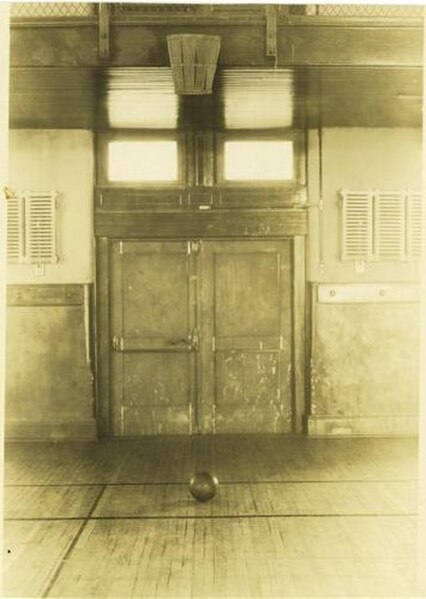In basketball, free throws or foul shots are unopposed attempts to score points by shooting from behind the free-throw line, a line situated at the end of the restricted area. Free throws are generally awarded after a foul on the shooter by the opposing team, analogous to penalty shots in other team sports. Free throws are also awarded in other situations, including technical fouls, and when the fouling team has entered the bonus/penalty situation. Also, depending on the situation, a player may be awarded between one and three free throws. Each successful free throw is worth one point.
Trae Young of the Atlanta Hawks shoots a free throw during a game vs the Washington Wizards.
Immanuel Quickley of the New York Knicks shoots a free throw during a game versus the Detroit Pistons.
Fatimatou Sacko for her first free throw
Fans attempting to distract a free throw shooter from the opposing team
Basketball is a team sport in which two teams, most commonly of five players each, opposing one another on a rectangular court, compete with the primary objective of shooting a basketball through the defender's hoop, while preventing the opposing team from shooting through their own hoop. A field goal is worth two points, unless made from behind the three-point line, when it is worth three. After a foul, timed play stops and the player fouled or designated to shoot a technical foul is given one, two or three one-point free throws. The team with the most points at the end of the game wins, but if regulation play expires with the score tied, an additional period of play (overtime) is mandated.
Chris Dudley (#22), playing for the New Jersey Nets, squares off with Michael Jordan (#23), of the Chicago Bulls on March 28, 1991. Other players including Chicago's Bill Cartwright (#24) are present on the court.
James Naismith c. 1920
The first basketball court: Springfield College
The 1899 University of Kansas basketball team, with James Naismith at the back, right








